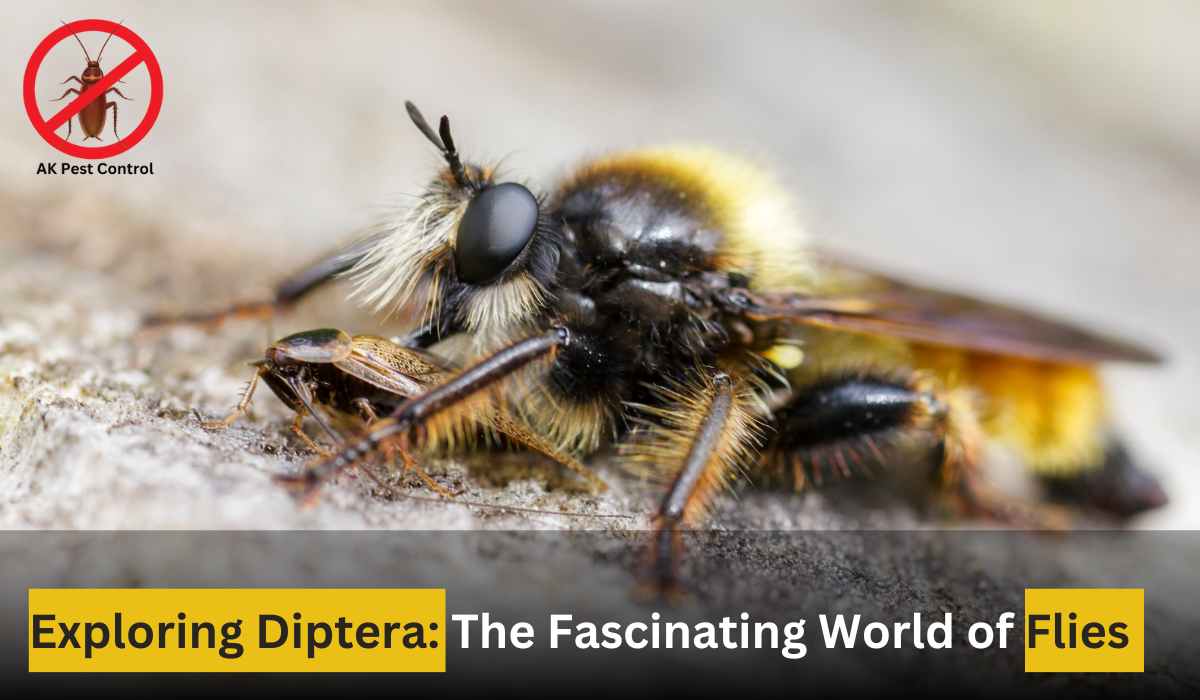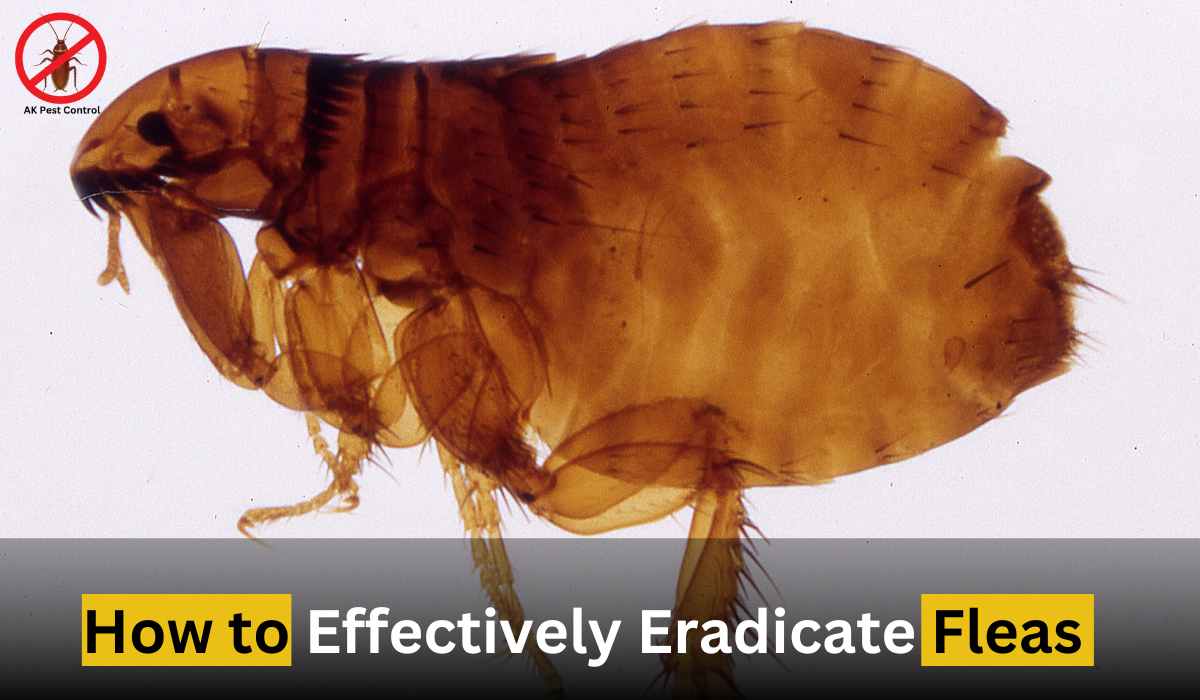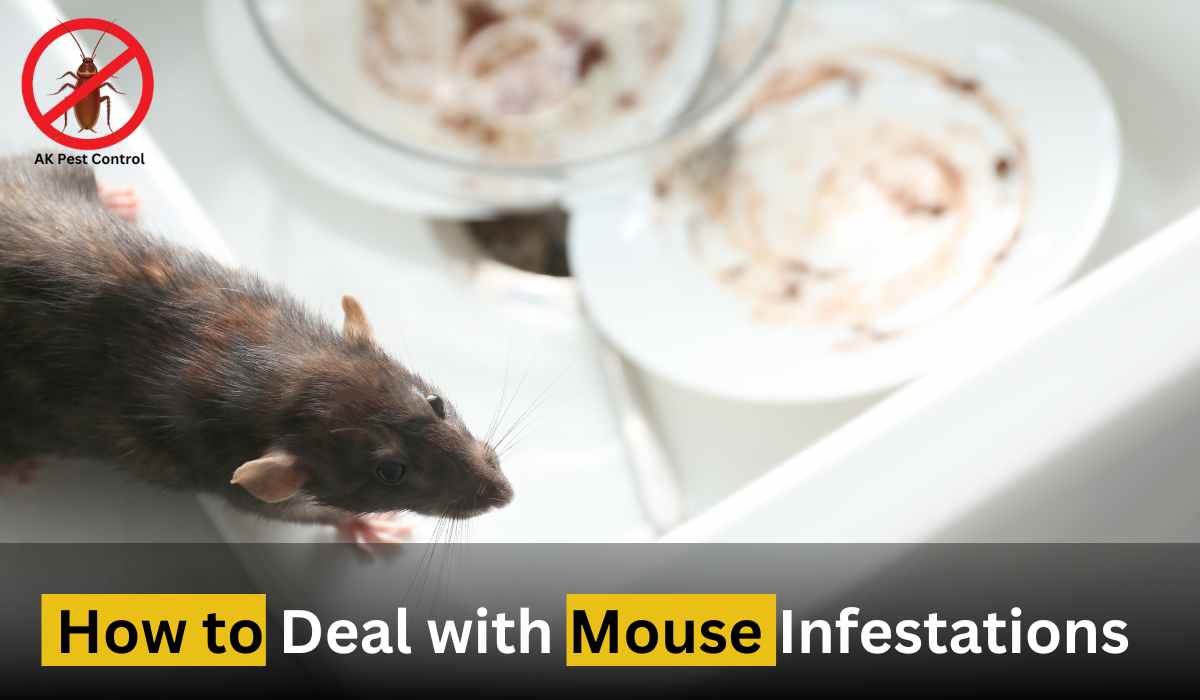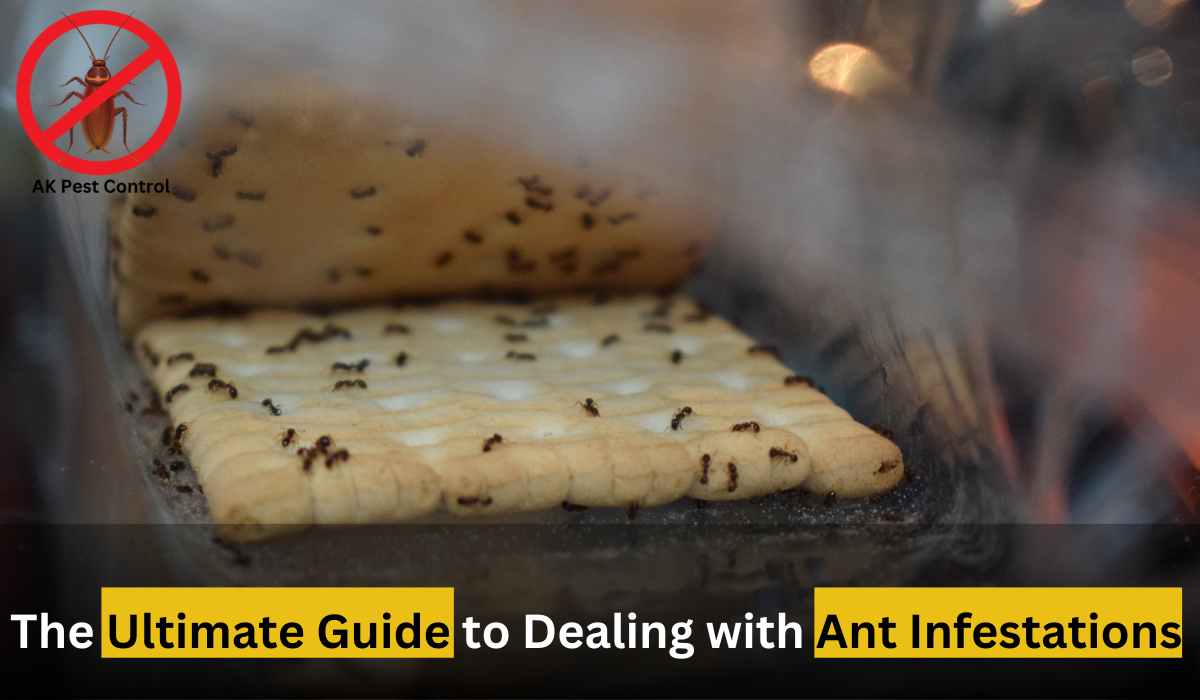
by Dr Asghar Ali | Oct 28, 2023 | Pest Control
Welcome to our guide on Polistes versicolor, commonly known as the fly. In this article, we will explore the scientific aspects, characteristics, and effective methods to deal with these intriguing insects. Whether you’re an entomology enthusiast or simply looking for practical tips on managing fly infestations, we’ve got you covered.
Getting to Know Polistes Versicolor
Scientific Name and Classification
Polistes versicolor belongs to the order Hymenoptera and is commonly known as the fly due to its resemblance to a typical housefly.
Color Variations
These flies come in various colors, which include black, white, yellow, and reddish-brown. This diversity in coloration adds to their mystique and makes them an interesting subject for study.
Physical Characteristics
Antennae
One of the most distinctive features of Polistes versicolor is its long antennae, which are made up of up to 13 segments. These antennae play a crucial role in their sensory perception.
Wings
Flies possess two pairs of wings, with the front ones being longer than the hind ones. This wing configuration allows them to fly with agility and precision.
Life Span
The typical life span of a Polistes versicolor fly ranges from 10 to 22 days. Understanding their life cycle is essential for effective management.
Managing Polistes Versicolor: Tips and Techniques
Identifying a Fly Infestation
Before taking any action, it’s crucial to identify the presence of Polistes versicolor flies in your vicinity. Look for signs such as congregations around food sources or a buzzing sound.
Vacuuming as a Removal Method
One of the most effective and humane methods for dealing with fly infestations is vacuuming. A handheld vacuum cleaner with a nozzle attachment can easily capture these insects without harming them.
Steaming for Precision
For more localized infestations, steaming can be a precise way to remove flies. Steam not only captures the flies but also sterilizes the area, preventing further infestations.
Spraying Insecticides
Insecticides formulated for flying insects can be applied as a preventive measure. Make sure to follow the instructions on the product label for safe and effective application.
Dusting as a Barrier
Dusting areas prone to fly infestations with talcum powder or diatomaceous earth can create a barrier that discourages their presence.
Conclusion
Polistes versicolor, commonly known as the fly, presents a unique blend of characteristics that make them both intriguing and occasionally challenging to deal with. By understanding their biology and employing effective removal techniques, you can manage fly infestations while preserving the delicate balance of your ecosystem.
Frequently Asked Questions
Are Polistes versicolor flies harmful to humans?
No, these flies are generally harmless and do not pose a significant threat to humans.
What attracts Polistes versicolor flies to a specific area?
These flies are often attracted to food sources, particularly sweet and savory items, as well as decaying organic matter.
Can I release captured Polistes versicolor flies back into the wild?
Yes, if you choose a humane method of removal such as vacuuming, you can release them safely outdoors.
How can I prevent fly infestations in my home?
Maintaining proper sanitation, sealing food containers, and using window screens can help prevent fly infestations.
What is the ecological role of Polistes versicolor in nature?
These flies play a role in pollination and contribute to the ecosystem by serving as a food source for various predators.

by Dr Asghar Ali | Oct 28, 2023 | Pest Control
Flies, scientifically known as Diptera, are a diverse group of insects found worldwide. While they are often considered pests, these tiny creatures have a unique place in the ecosystem. In this article, we will delve into the world of Diptera, their characteristics, and effective methods to control and eliminate them.
What is Diptera?
Diptera, commonly known as flies, encompass a vast variety of species. From compact gnats to gangly houseflies, their body shape can vary significantly. These insects are characterized by their two-winged structure, which is a defining feature of the order Diptera.
The Color of Diptera
Flies come in various shades, but the most common colors range from ash gray to blue-green. The coloration often depends on the type of fly and its environment. These colors make them distinctive and easily recognizable.
Understanding Diptera’s Body Shape
The body shape of Diptera can vary from species to species. While some flies have compact, almost inconspicuous bodies, others have more elongated and gangly shapes. These unique shapes are adaptations that help them in their respective habitats.
The Life Span of Diptera
The life span of a fly is relatively short, typically lasting between 15 to 30 days. During this time, they undergo significant developmental stages from eggs to larvae and, finally, to adult flies. Understanding their life cycle is crucial in controlling fly populations.
Effective Methods to Kill Flies
Controlling fly populations is essential for maintaining hygiene and reducing the risk of disease transmission. Here are some effective methods to kill flies:
Vacuuming as a Fly Control Method
Vacuuming is a practical way to remove flies from your living space. Use a handheld vacuum or a standard vacuum cleaner with a hose attachment to suck up flies. This method is particularly useful when you need a quick solution to eliminate flies indoors.
Fly Spraying – A Viable Solution
Fly sprays and insecticides are readily available in the market. They can be applied directly to the flies or sprayed in the areas where flies are most common. These products are formulated to effectively kill flies and keep them at bay.
Dusting: Another Option to Eliminate Flies
Dusting with fly repellent powders is another method to control fly infestations. These powders are applied in areas where flies congregate, such as garbage bins or outdoor eating areas. The powder adheres to the flies and ultimately leads to their demise.
DIY Fly Traps
You can also create DIY fly traps at home using common household items like vinegar or sugary substances. These traps lure flies in and prevent them from escaping, reducing their numbers.
Preventing Fly Infestations
Preventing fly infestations is just as crucial as eliminating them. Maintaining cleanliness, sealing garbage cans, and keeping food covered are important measures to deter flies from invading your space.
Conclusion
In conclusion, Diptera, or flies, are a diverse group of insects with intriguing characteristics. Understanding their life cycle, body shapes, and coloration can aid in effective fly control. By employing methods like vacuuming, spraying, and dusting, you can keep your living spaces fly-free. Additionally, prevention plays a key role in maintaining a fly-free environment.
FAQs
Are all flies harmful?
Flies can carry diseases and be a nuisance, but not all are harmful. Many species play vital roles in the ecosystem.
What’s the best time to control flies?
Controlling flies is best done in the warmer months when they are most active.
Do fly traps work effectively?
Yes, fly traps can be quite effective, especially when placed in strategic locations.
Can I use natural remedies to control flies?
Natural remedies like essential oils and vinegar can help deter flies, but may not be as effective as chemical methods.

by Dr Asghar Ali | Oct 28, 2023 | Pest Control
Fleas, scientifically known as Siphonaptera, are pesky little creatures that can infest our homes and make our lives miserable. In this comprehensive guide, we will delve into the world of fleas, learning about their characteristics, lifespan, and most importantly, how to effectively eliminate them from your living space.
Understanding Fleas
What are Fleas?
Fleas, with their dark brown color and flattened pancake-like shape, are parasitic insects that feed on the blood of their hosts. These tiny terrors are not only a nuisance to your pets but can also bite and irritate humans.
The Flea’s Life Span
Fleas have a relatively short life span, typically ranging from 2 to 3 months. During this time, they can multiply rapidly, making it essential to act swiftly when you discover an infestation.
Flea Control Methods
Vacuuming: A Crucial Step
One of the most effective ways to combat a flea infestation is through regular vacuuming. Be sure to vacuum not only your floors but also your furniture, cushions, and even your pet’s bedding. Empty the vacuum bag or canister immediately to prevent fleas from escaping.
Steaming: Killing Fleas with Heat
Fleas are sensitive to heat, and using a steam cleaner can be a highly effective way to kill them. The high temperatures produced by a steam cleaner can penetrate carpets, upholstery, and crevices where fleas may be hiding.
Spraying: Targeted Pest Control
There are various flea sprays available on the market. It’s crucial to choose a pet-safe and effective spray. When using these products, be sure to follow the instructions carefully to ensure you target both adult fleas and their eggs.
Dusting: An Extra Layer of Defense
Diatomaceous earth is a natural, non-toxic substance that can be sprinkled on carpets and pet bedding. This fine powder works by dehydrating fleas and other pests. Remember to wear a mask when applying it and keep pets away until it settles.
Conclusion
Dealing with a flea infestation can be a challenging and frustrating experience. However, by taking swift and thorough action using the methods outlined in this guide, you can regain control of your living space and provide relief for both your pets and yourself.
Now, let’s address some common questions related to flea control.
FAQs
Are fleas harmful to humans?
Fleas can bite humans, causing itching and discomfort. While they are not typically dangerous, it’s essential to address an infestation promptly.
Can I use chemical pesticides to control fleas?
While chemical pesticides can be effective, they should be used with caution, especially in homes with pets or children. It’s advisable to explore natural and pet-safe alternatives first.
How can I prevent future flea infestations?
Regular pet grooming, keeping your home clean, and using preventive measures, such as flea collars or spot-on treatments, can help prevent future infestations.
Are there any health risks associated with fleas?
Fleas can transmit diseases in some cases, making it important to address infestations promptly. Common sense and good hygiene practices can minimize these risks.
What if my flea problem persists despite my efforts?
If your flea problem persists, consider seeking professional pest control services. They have the expertise and tools to handle severe infestations effectively.

by Dr Asghar Ali | Oct 28, 2023 | Pest Control
Mice, scientifically known as Mus musculus, are common household pests that can be a source of great distress. They come in various colors, ranging from white to light brown, dark brown, silver, gray, or black, and typically measure between 5 to 7 inches in length with a round body shape. With a life span of 2 to 5 years, these critters can quickly multiply if not dealt with promptly. In this comprehensive guide, we will explore effective methods to deal with mouse infestations. From humane solutions like live traps to more lethal options such as glue boards and rodenticide bait stations, we’ve got you covered.
Understanding the Mouse Problem
Before diving into solutions, it’s essential to understand the extent of your mouse infestation. Mice are not only a nuisance but also carriers of diseases. They can contaminate your food, chew through wires, and create unsightly droppings. The first step is to identify the signs of an infestation, such as droppings, chewed items, or strange noises at night.
Prevention is Key
Preventing a mouse infestation is often more straightforward than dealing with one. Seal all entry points into your home, including gaps around doors and windows, vents, and holes in your walls. Keep food stored in airtight containers, and regularly clean up crumbs and spills. Maintaining a tidy home can go a long way in deterring mice.
Humane Traps
For those who prefer a more humane approach, live traps are an excellent choice. These traps allow you to capture the mice without causing harm. Once caught, you can release them safely into the wild, far from your home. It’s essential to check these traps regularly to avoid unnecessary suffering.
Glue Boards
Glue boards are another option for dealing with mice. These are adhesive traps that mice get stuck to when they walk over them. While not the most humane method, they are highly effective. Be sure to check these traps regularly and dispose of the captured mice quickly.
Secured and Locked Rodenticide Bait Stations
If your mouse infestation is severe, you might need to resort to rodenticide bait stations. These stations contain poison that, when ingested by the mice, is lethal. However, this method should be used with caution, especially in homes with pets or small children. Always ensure the bait stations are secured and locked to prevent accidental access.
Conclusion
Dealing with a mouse infestation can be a daunting task, but it’s essential to address the issue promptly to prevent further problems. Whether you choose a humane approach with live traps, opt for the effectiveness of glue boards, or resort to secured and locked rodenticide bait stations, taking action is crucial. Remember that prevention is key, and maintaining a clean and tidy home can significantly reduce the risk of future infestations.
FAQs
Are mice dangerous to humans?
Yes, mice can transmit diseases through their droppings and urine, making them a potential health hazard.
How can I prevent a mouse infestation?
To prevent a mouse infestation, seal entry points, keep food stored securely, and maintain good hygiene in your home.
Are glue boards humane?
Glue boards are effective but not the most humane method, as they can cause suffering to captured mice.
Are rodenticide bait stations safe for homes with pets?
Rodenticide bait stations should be used with caution in homes with pets, as the poison can be harmful to them. Ensure the stations are secured and locked.
How often should I check traps and bait stations?
It’s essential to check traps and bait stations regularly to prevent the buildup of dead mice and ensure the effectiveness of your chosen method.

by Dr Asghar Ali | Oct 28, 2023 | Pest Control
In the world of pests, ants are some of the most common intruders we encounter in our homes. From their scientific name, Formicidae, to their varied colors, and even their tricky lifespan, these little critters can be both fascinating and frustrating to deal with. In this article, we’ll delve into the science and practicality of ant control, answering the age-old question: “How to kill ants?”.
Understanding the Ant World
The Scientific Name
Ants belong to the family Formicidae. But there’s more to them than just this formal designation. Let’s explore.
Ants, scientifically known as Formicidae, are small insects that have managed to adapt to various environments across the globe. They form complex colonies and come in a range of colors, with brown to black being the most common.
The Color Palette
Ants come in a spectrum of colors, from light brown to pitch black. This wide range of colors can make identifying specific ant species quite challenging.
Anatomy – Unveiling Their Unique Features
Ants are known for their distinctive features. One of the most recognizable is their broad, triangular mandibles, armed with short, pointy teeth. These mandibles serve various purposes in the ant world.
The Lifespan of Ants
The lifespan of ants varies greatly, depending on the type of ant and the role they play in the colony. While some ants may only live for a few months, others can thrive for several years.
Dealing with Ant Infestations
The Challenge of Ant Infestations
Ant infestations can be a real headache for homeowners. They can quickly multiply, invade your kitchen, and disrupt your daily life.
How to Kill Ants – An Overview
So, how do you effectively deal with ant infestations? There are several methods available, each with its own advantages and drawbacks.
Spraying
One common approach is spraying insecticides. This method is quick and efficient, but it may not eliminate the entire colony.
Dusting
Dusting with ant-specific powders can be a good solution for hard-to-reach areas. This method is effective for both prevention and treatment.
Applying Gel
Ant baits in gel form can be strategically placed to attract and poison ants. This method is excellent for targeting specific ant species.
Using Bait
Baits can be laid out to lure ants and exterminate them. This method requires patience as it may take time to eliminate the entire colony.
The Art of Ant Control
Ant Prevention Tips
Prevention is often the best form of ant control. Here are some useful tips to keep those pesky ants at bay.
Keep it Clean
Maintaining a clean environment is crucial. Wipe down surfaces, sweep floors, and remove food scraps promptly.
Seal Entry Points
Ants can find their way into your home through even the tiniest openings. Seal cracks and gaps in walls, doors, and windows.
Proper Food Storage
Store food items in airtight containers to prevent ants from gaining access to your pantry.
Conclusion
Ants, with their intriguing biology and persistent presence, are a challenge many homeowners face. Understanding their nature and employing effective control methods is essential to maintaining a pest-free home. So, whether it’s dusting, gels, or baits, you now have the knowledge to tackle ant infestations successfully.
Frequently Asked Questions (FAQs)
Are all ants the same color?
No, ants come in various colors, with brown to black being the most common. Some species may exhibit different colors.
Can I rely solely on prevention methods to avoid ant infestations?
Prevention is a vital aspect of ant control, but sometimes infestations can occur even in the cleanest homes. It’s best to be prepared to address the issue.
How do I know if I have an ant infestation?
Signs of an ant infestation include seeing ants in your home, finding ant trails, or discovering ant nests near your property.
Are there eco-friendly ways to deal with ant infestations?
Yes, there are eco-friendly and natural methods, such as using vinegar, lemon juice, or diatomaceous earth, to repel or eliminate ants.
Are ants harmful, or are they just a nuisance?
While most ants are not directly harmful to humans, some can bite or sting. Additionally, they can contaminate food and be a general nuisance in your home.

by Dr Asghar Ali | Oct 27, 2023 | Pest Control
In this article, we’ll delve into the fascinating world of bed bugs. These tiny creatures, scientifically known as Cimex lectularius, are a common household nuisance. We’ll explore their appearance, life cycle, and most importantly, how to get rid of them. By the end of this read, you’ll be well-equipped to battle these unwelcome guests.
What Are Bed Bugs?
Bed bugs, scientifically named Cimex lectularius, are small insects that feed on the blood of humans and animals. They are reddish-brown to gray in color and have an oval, flat shape resembling an apple seed.
Life Cycle of Bed Bugs
1. Eggs
Bed bugs lay anywhere from 1 to 5 eggs per day, with a total lifespan of 250 to 450 eggs. These tiny, oval-shaped eggs are laid in cracks and crevices, making them challenging to spot.
2. Nymphs
Once the eggs hatch, they develop into nymphs. These immature bed bugs are small and pale in color. They go through five stages, shedding their skin as they grow.
3. Adults
After approximately four weeks, the nymphs mature into adult bed bugs. At this stage, they are about the size of an apple seed and have a reddish-brown hue.
How to Get Rid of Bed Bugs
Now that you have an understanding of what bed bugs are and their life cycle, let’s move on to the pressing question: How do you get rid of them?
1. Vacuuming
One of the most effective ways to eliminate bed bugs is by vacuuming. Use a vacuum cleaner with a crevice tool to reach into cracks and crevices where these pests hide. Be sure to empty the vacuum bag or canister in an outdoor trash bin to prevent them from returning.
2. Steaming
Bed bugs can’t survive high temperatures. Using a steamer on your mattress, upholstery, and carpets can kill them and their eggs. Make sure the steamer reaches at least 160°F (71°C) to be effective.
3. Spraying
There are various bed bug sprays available in the market. Choose one that’s specifically designed for bed bug control. Follow the manufacturer’s instructions carefully when applying the spray.
4. Dusting
Diatomaceous earth is a natural product that can be used to combat bed bugs. It’s a fine powder that, when sprinkled in infested areas, can damage the bed bugs’ outer shells and eventually kill them.
Conclusion
In conclusion, understanding bed bugs is the first step in dealing with an infestation. We’ve learned about their appearance, life cycle, and effective methods to eradicate them. By taking action promptly, you can ensure a good night’s sleep without the fear of these unwanted guests.
Don’t let bed bugs disrupt your peace. Act now to eliminate them and enjoy a bug-free home!
FAQs
Are bed bugs dangerous to humans?
Bed bugs are not known to transmit diseases, but their bites can cause itching and discomfort.
Can I get rid of bed bugs on my own, or should I call a professional?
Small infestations can often be handled by individuals using the methods mentioned in this article. However, for larger infestations, it’s advisable to consult a pest control professional.
Where do bed bugs hide in the daytime?
Bed bugs are experts at hiding in cracks, crevices, and folds of mattresses and upholstery. They can also hide behind baseboards and electrical outlets.
How can I prevent a bed bug infestation?
To prevent bed bugs, regularly inspect your bedding and furniture, and avoid bringing used or second-hand furniture into your home without careful inspection.
Do bed bugs only infest beds?
No, bed bugs can infest any area where humans or animals are present. They can hide in furniture, luggage, and clothing, making it essential to be vigilant when traveling or acquiring used items.







Recent Comments